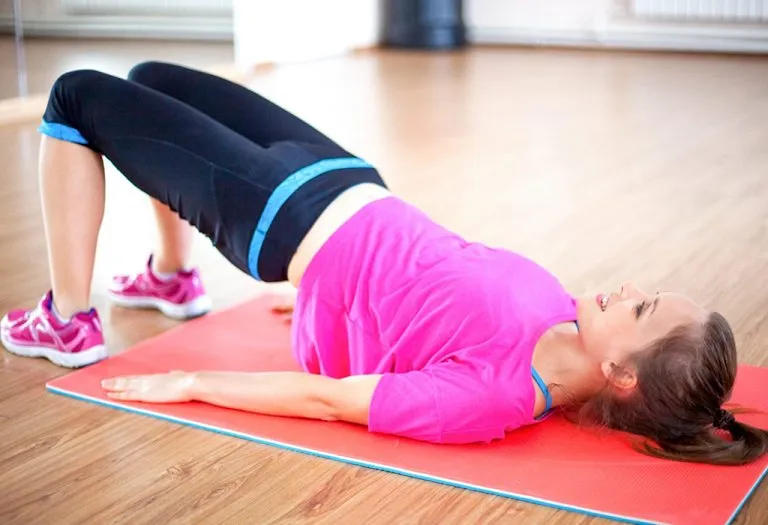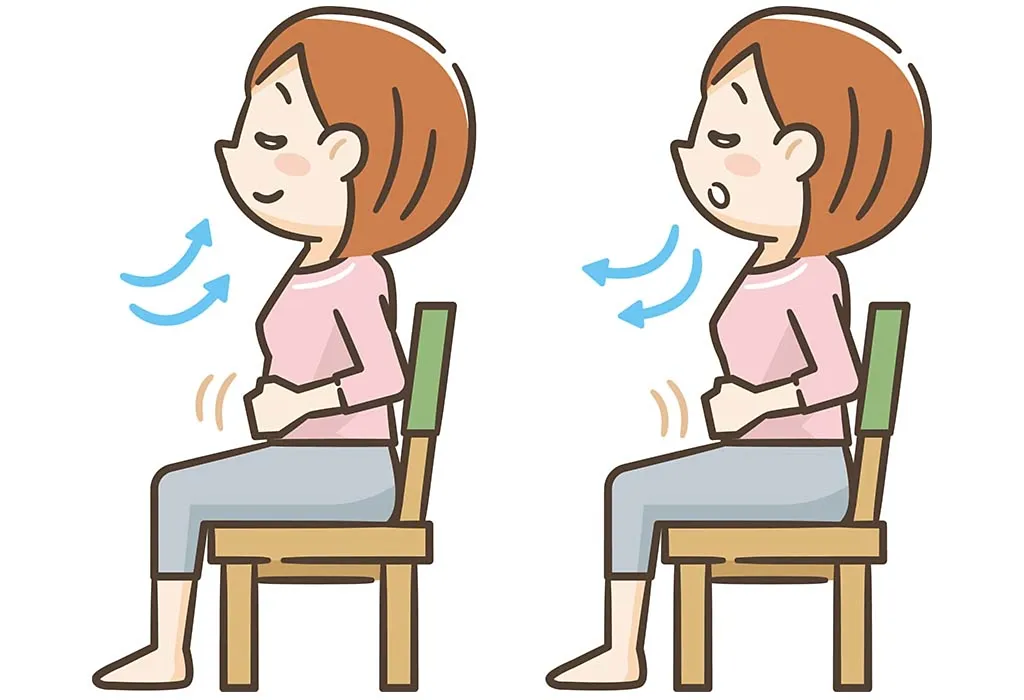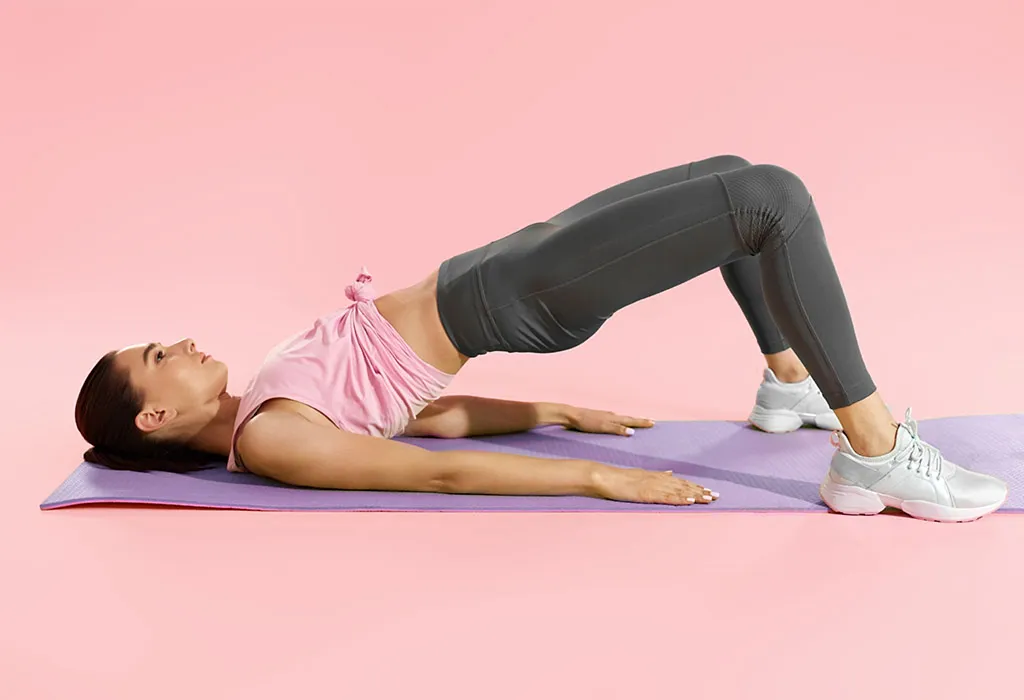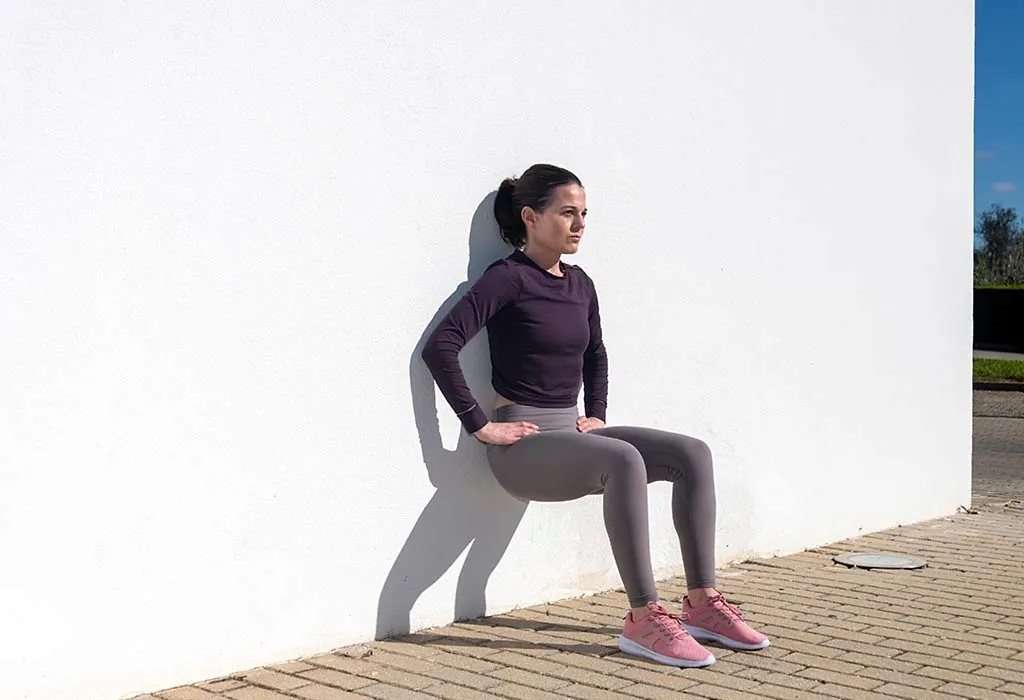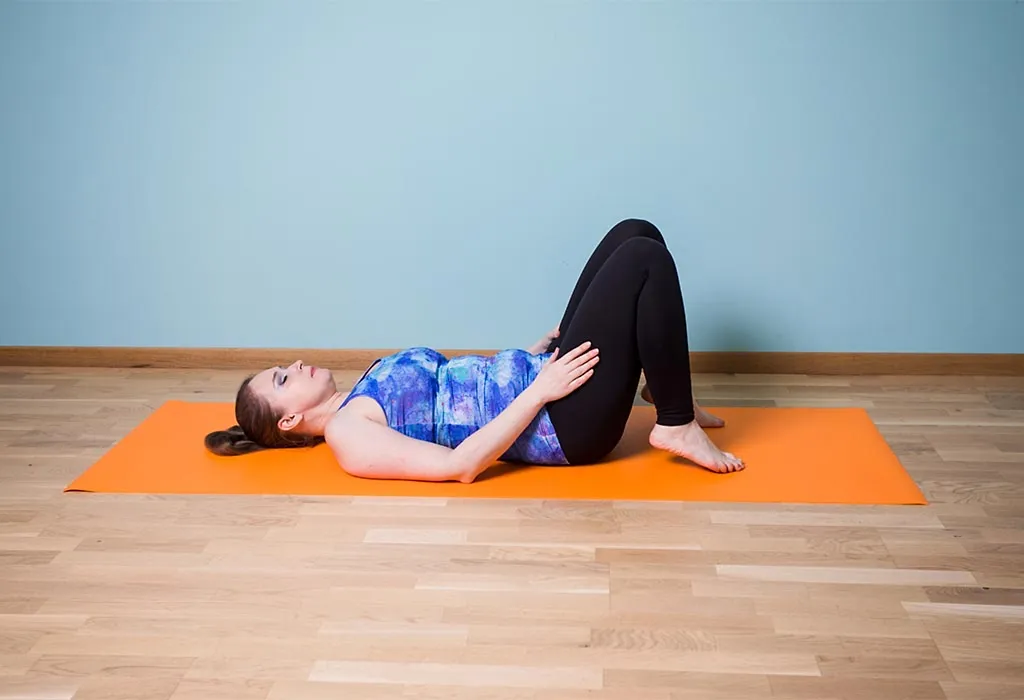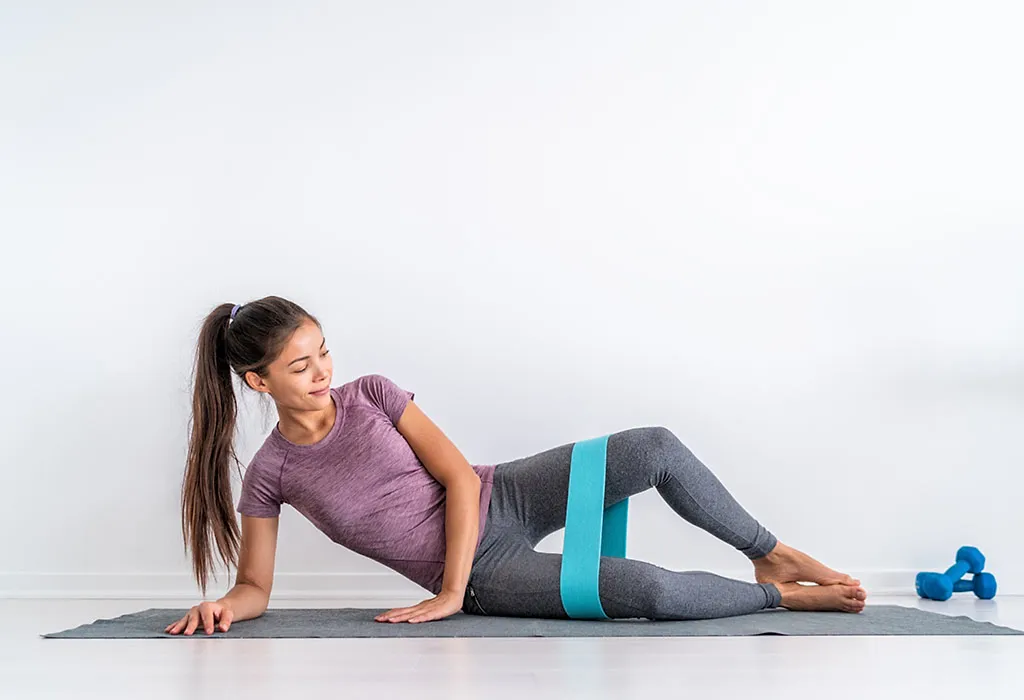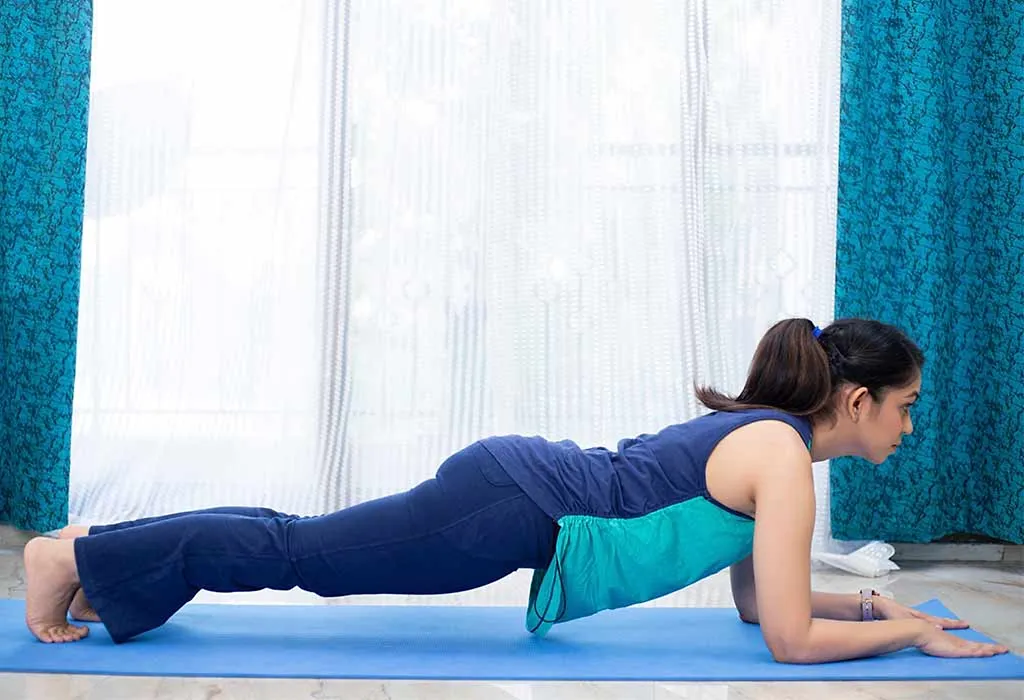12 Kegel (Pelvic floor) Exercises After Birth

Exercising during the onset of pregnancy is highly recommended to prepare your body for the baby’s arrival. Incorporating regular physical activity not only promotes overall health but also helps in managing the physical changes that come with pregnancy. Among the various exercises, Kegels stand out as one of the most beneficial. Kegel exercising specifically target the pelvic floor muscles, which play a crucial role during childbirth and recovery. These exercises help in physically and mentally stimulating your muscles and mind, allowing you to feel more relaxed during this generally tense phase. Additionally, continuing pelvic floor exercises after birth can aid in faster recovery and prevent potential postpartum issues.
Pregnancy and Birth
The arrival of a baby is the most wonderful experience in a woman’s life; however, giving birth can also take a toll on her body. While you want to make sure that things run smoothly for your newborn, you will also need to ensure their well-being and health. You will have to sleep well, eat healthily and manage your weight. Besides dealing with these, you will also need to work on getting back your pelvic muscles to pre-baby strength.
During pregnancy, the pelvic floor muscle that supports the bladder, bowel and the uterus of a woman weakens, causing leakage or bowel incontinence after childbirth. The best way to strengthen pelvic muscles is with the Kegel exercise, named after Dr. Arnold Kegel, the gynaecologist who developed these exercises as a non-surgical option for pelvic relaxation.
When Can You Start Postpartum Kegel Exercises?
Strengthening your pelvic floor muscles is absolutely necessary for recovery after pregnancy. It should form part of your regular exercise routine.You can check with your doctor or start with a kegel routine after 6 weeks of giving birth.
Benefits of Kegel Exercise After Delivery
Kegel exercises are beneficial when you’re pregnant and continue to offer benefits after the birth of the child. It is an exercise for your insides.
1. Healthy Healing
Kegel exercises after childbirth are needed for healing the weakened, strained or damaged pelvic muscles from pushing the baby through the birth canal. Sometimes your vagina’s muscles, cervix and uterus might get torn in the process of delivery or your doctor may have performed episiotomy – i.e. cut the perineum to ease the birth process. These muscles need to be healed and strengthened to avoid health issues in the long term. Kegels will increase the blood circulation to these areas and fasten the healing process.
2. Bladder Control Post-delivery
Whether you have the baby through a caesarean section or opt for normal delivery, you will have problems with bladder control. Urinary leakage issues are common after childbirth. An expanding uterus can place a lot of pressure on your pelvic floor muscles and weaken them, causing a leaky bladder. This can be embarrassing in public especially when you sneeze, cough or laugh. This is called ‘Stress Incontinence’. Kegel exercise after labour helps strengthen pelvic floor muscles and help you with bladder control.
3. Rekindling Romance / Intimacy
A major concern for new moms is comfort with sex again after childbirth. Your pelvic muscles are partially responsible for your vagina’s tightness. Stronger pelvic floor muscles and toned vagina will make sex more pleasurable for both partners. Kegel exercise after pregnancy can result in toned muscles for increased sensations and frequent orgasms, thus rekindling the intimacy.
4. Loose Ligaments
The loosening of ligaments and the additional pregnancy weight is a concern for all new moms. Pregnancy loosens and stretches your ligaments to enable your body to accommodate the baby as it grows inside you. On average, pregnancy can add between 12-18 kilograms (15-35 pounds) of weight that is extra. This will add pressure to the pelvic floor muscles, which have to stretch and strain in order to hold the increase in weight. Building stronger pelvic muscles to help these ligaments will protect you from vaginal incontinence and prolapse as you grow older.
5. Pelvic Organ Prolapse
Pelvic organ prolapse affects women after multiple deliveries. With each pregnancy, you are placing increased pressure on the pelvic floor muscles. Eventually, these muscles will weaken and will not be able to efficiently support organs like the bladder, uterus and rectum. It can cause these organs to drop and extend into your vaginal area. This can cause problems ranging from pelvic or back pain to bladder incontinence.
How to Do Pelvic Floor Exercises After Giving Birth?
Pelvic floor muscle exercises after pregnancy are the simplest non-surgical options to resolve common post-delivery issues, but unfortunately, most women find it hard to isolate the right muscles for kegel contractions. It is extremely important to follow the right technique and target the right muscles.
Ask your doctor to ensure that the exercises are being done properly. Exercising with Kegels can be extremely beneficial, especially during the postpartum recovery phase in order to help you get back to your pre-baby condition.
Techniques for Kegel
Make sure you empty your bladder completely before doing Kegel exercises. Incomplete emptying of the bladder can increase the risk of urinary tract infection. Focus is very important while performing Kegels. Focus on tightening the pelvic floor muscles only. Do not squeeze or move your legs, abdominal muscles or buttock during Kegels.
- Sit and lean slightly forward with a straight back.
- Begin with identifying the right pelvic floor muscles. Squeeze the muscles as if you are trying to stop the urine and passing of gas simultaneously; in case you are unable to isolate the muscles initially, insert a clean finger into your vagina, if you feel pressure on the finger, you have got the right muscles.
- Hold the contraction for 8-12 counts and then relax for 8-12 counts. Repeat two to three sets several times a day.
- Keep breathing normally while exercising.
- Try not to do Kegels while sneezing or coughing. It will keep you from leaking and avoid embarrassing situations.
- Do not attempt Kegels while emptying the bladder as it can weaken the muscles.
- Do not use Kegel exercise to start and stop your urinal stream.
Different Post Pregnancy Pelvic Floor Exercises
Post-pregnancy recovery is crucial, and one of the most important aspects to focus on is strengthening pelvic floor muscles after childbirth (1). These muscles play a key role in supporting the bladder, uterus, and bowel, especially after childbirth. Incorporating specific exercises for pelvic floor after birth into your routine can help you regain strength and prevent issues such as incontinence or pelvic organ prolapse.
1. Basic Kegels
How to Do
- Sit or lie down in a comfortable position.
- Tighten your pelvic floor muscles as if you’re trying to stop the flow of urine.
- Hold the contraction for 5 seconds, then relax for 5 seconds.
- Repeat this exercise 10-15 times, gradually increasing the hold time to 10 seconds.
2. Squeeze and Release
How to Do
- Sit or lie down in a relaxed position.
- Quickly tighten and release your pelvic floor muscles.
- Aim for 10-15 repetitions in a session.
- Perform this exercise multiple times a day to improve muscle endurance.
3. Bridge with Pelvic Floor Activation
How to Do
- Lie on your back with your knees bent and feet flat on the floor.
- Tighten your pelvic floor muscles and lift your hips towards the ceiling.
- Hold the position for a few seconds while maintaining the pelvic floor contraction.
- Slowly lower your hips back down and relax.
4. Deep Breathing with Pelvic Floor Engagement
How to Do
- Sit or lie down comfortably and take a deep breath in.
- As you exhale, gently contract your pelvic floor muscles.
- Focus on slow and controlled breathing while maintaining the contraction.
- Repeat this exercise for 5-10 breaths.
5. Pelvic Tilts
How to Do
- Lie on your back with knees bent and feet flat on the floor.
- Tighten your pelvic floor muscles and tilt your pelvis slightly upward.
- Hold the position for a few seconds before relaxing.
- Repeat this exercise 10-15 times.
6. Side-lying Leg Lift with Pelvic Floor Engagement
How to Do
- Lie on your side with legs straight and stacked on top of each other.
- Tighten your pelvic floor muscles and lift the top leg towards the ceiling.
- Hold the position for a few seconds, then lower the leg back down.
- Repeat 10-12 times on each side.
7. Wall Squats with Pelvic Floor Activation
How to Do
- Stand with your back against a wall and feet shoulder-width apart.
- Slowly slide down the wall into a squat position while tightening your pelvic floor muscles.
- Hold the squat for a few seconds before standing back up.
- Perform 10-15 repetitions.
8. Heel Slides
How to Do
- Lie on your back with knees bent and feet flat on the floor.
- Tighten your pelvic floor muscles and slowly slide one heel away from your body.
- Bring the heel back to the starting position while maintaining the contraction.
- Repeat with the other leg, performing 10-12 repetitions on each side.
9. Clamshells
How to Do
- Lie on your side with knees bent and feet together.
- Tighten your pelvic floor muscles and lift the top knee while keeping your feet together.
- Hold for a few seconds, then lower the knee back down.
- Repeat 10-12 times on each side.
10. Plank with Pelvic Floor Activation
How to Do
- Start in a plank position with forearms supporting your weight.
- Tighten your pelvic floor muscles while maintaining the plank position.
- Hold the position for 10-15 seconds, then relax.
- Perform 5-8 repetitions.
11. Tailor Sitting
How to Do
- Sit on the floor with your legs crossed and back straight.
- Tighten your pelvic floor muscles and hold the contraction for a few seconds.
- Relax and repeat the exercise 10-15 times.
12. Bird-Dog with Pelvic Floor Engagement
How to Do
- Start on your hands and knees in a tabletop position.
- Tighten your pelvic floor muscles and extend one arm forward and the opposite leg backward.
- Hold the position for a few seconds, then return to the starting position.
- Repeat on the other side, performing 10-12 repetitions on each side.
Tips While Doing Pelvic Floor Exercises After Childbirth
Pelvic floor exercises are essential for postpartum recovery, but it’s important to perform them correctly to maximise their benefits and avoid injury. Here are some helpful tips to keep in mind while doing these exercises after childbirth (2):
- Begin with gentle contractions and gradually increase the intensity as your body heals and becomes stronger.
- Ensure you’re targeting the right muscles by avoiding the use of your abdominal, thigh, or buttock muscles while doing the exercises.
- Don’t hold your breath; instead, breathe deeply and consistently throughout each exercise to prevent unnecessary strain.
- Regular practice is key. Aim to incorporate postpartum pelvic floor exercises into your daily routine for the best results.
- If you experience any pain or discomfort, stop the exercises and consult with your healthcare provider for guidance.
- Allow time for rest between exercises to avoid muscle fatigue and ensure proper recovery.
When to Stop Pelvic Floor Exercises?
It is important to strengthen the pelvic floor muscles all through your life. Never stop Kegels. Make them a part of your routine exercise even after pregnancy.
FAQs
1. How long should I continue doing Kegel exercises postpartum?
You should continue doing Kegel exercises after giving birth indefinitely to maintain pelvic floor strength. However, the intensity and frequency can be adjusted based on your recovery progress and overall pelvic health.
2. Can Kegel exercises help with postpartum sexual discomfort?
Yes, Kegel exercises can improve blood circulation to the pelvic region, enhance muscle tone, and potentially reduce discomfort during sex by strengthening the pelvic floor muscles, which can become weakened after childbirth.
Doing Kegels on a regular basis helps tone up and strengthen the muscles and offer protection against problems like urinary incontinence, pelvic organ prolapse as you age. Take some time out to perform the exercise on a daily basis to reap the maximum benefits from them.
References/Resources:
1. Kegel exercises: A how-to guide for women; Mayo Clinic; https://www.mayoclinic.org/healthy-lifestyle/womens-health/in-depth/kegel-exercises/art-20045283
2. Safe return to exercise after pregnancy; Pregnancy, Birth & Baby; https://www.pregnancybirthbaby.org.au/safe-return-to-exercise-after-pregnancy
3. C-Section Recovery Timeline and Aftercare; Cleveland Clinic; https://health.clevelandclinic.org/c-section-recovery
4. The pelvic floor; The Women’s: The Royal Women’s Hospital; https://www.thewomens.org.au/health-information/pregnancy-and-birth/a-healthy-pregnancy/the-pelvic-floor
5. Pelvic floor muscle exercises; Great Ormond Street Hospital; https://media.gosh.nhs.uk/documents/Pelvic_floor_muscle_exercises_1_C0180_yp_A4_bw_FINAL_Jul16.pdf
6. Pelvic floor exercises; Pregnancy, Birth & Baby; https://www.pregnancybirthbaby.org.au/pelvic-floor-exercises
7. Golmakani. N, Zare. Z, Khadem. N, Shareh. H, Shakeri. M; The effect of pelvic floor muscle exercises program on sexual self-efficacy in primiparous women after delivery (Iranian Journal of Nursing and Midwifery Research); National Library of Medicine; https://www.ncbi.nlm.nih.gov/pmc/articles/PMC4462060/
Also Read:
Postpartum Exercises
Benefits of Postpartum Yoga
Postpartum Stomach Exercises
Was This Article Helpful?
Parenting is a huge responsibility, for you as a caregiver, but also for us as a parenting content platform. We understand that and take our responsibility of creating credible content seriously. FirstCry Parenting articles are written and published only after extensive research using factually sound references to deliver quality content that is accurate, validated by experts, and completely reliable. To understand how we go about creating content that is credible, read our editorial policy here.






